A Beginners Journey in Photography - Part 4: All you have ever wanted to know about lenses
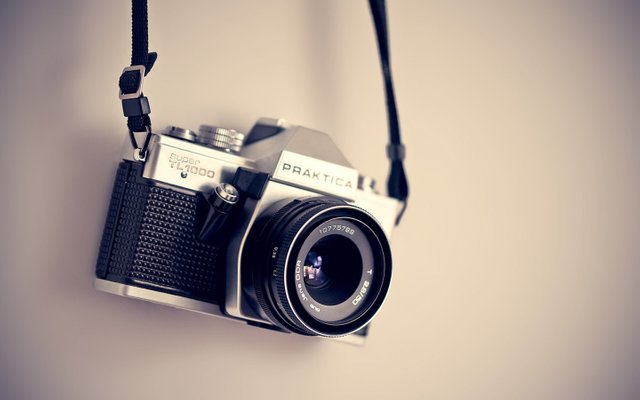
Hello dear friends.
Before I start I want to thank all of my readers for the amazing responses on my most recent post. I promise I will try even harder to provide you with the content you deserve. Lets begin.
Today will be my last post in my Beginners Journey in Photography of this format, meaning this will be my last post where I explain the different parts of the camera. If all goes well I will be a proud owner of a very specific camera in about a week. That is when I will be doing a reveal post and announcing the winner of the challenge I post on the end of every post. Some of you have been diligently responding and some of you might be correct or maybe not. You will soon see who will be the proud owner of 10 STEEM.
After I get my camera I will be starting to do a different format, which I am very excited about. I will be doing a format, where I take photos with my camera and then go through the process of post-processing the raw photos with you. In this way I hope we all can learn a little something about photography! From time to time I will still be doing more informative posts like I did up to now.
Todays post will be focused on what a lense is. I will also be describing some optical distortion that occur when we use lenses.

HOW A LENS WORKS

The first order of every serious photography enthusiast is to learn how a lens works. Not only does this help with your general knowledge on optics, this will also help you when you are trying to buy a lens suitable for your camera body - meaning for your sensor.
Many types of lenses exist as can be seen in the figure bellow.
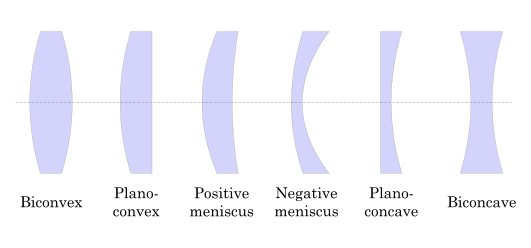
And as you can see in the picture of the camera bellow, most of the convex type lenses are actually in use in cameras.
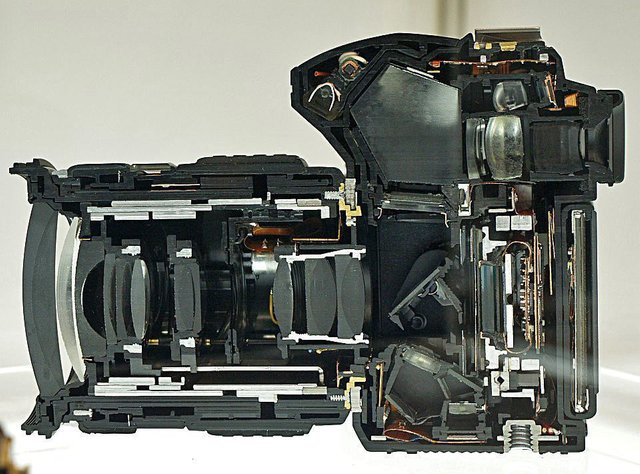
It is a very difficult optical system to consider so lets start with a simpler system. Lets pretend we have a simple convex lens. It is perfectly defined if we know the curvatures of the lens on both sides and also if we know the material it is made out of. Usually simple lenses are made out of glass.
Another parameter that defines the lens is the so-called focal length denoted with f in the figure bellow.
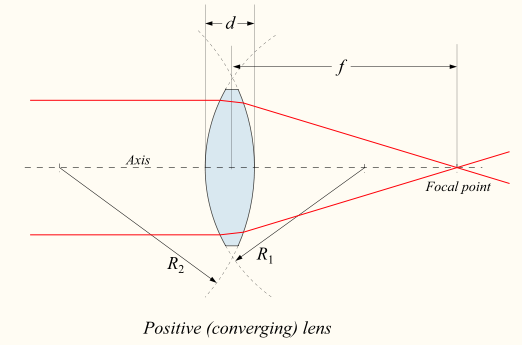
The focal length tells us where a picture of an object will be created if an object is an so far away that the rays from it fall on the lens parallely. This happens only if the object is much much further away then is the focal length of the lens. If we try to photograph an object very close to the lens the bottom equation tells us where the picture will form.

f is again the focal length of the lens, a the distance from the object to the lens and b tells us where the picture will form. The magnification is then M = a/b.
When we put many lenses together one would expect it to be a true shitstorm of math, but fortunately experimentally the case is the same as just with one lens. If you shine a light on the lens that hits it in parallel rays you can determine the focal length of the compounded lens. This gives you all the needed optical information.
Of course there are other parameters like the size of the lens, but the importance of this is pretty simple. The bigger the lens, the more light it lets through to the sensor, but we must be careful because bigger lenses produce more distorted images.

LENS ERRORS

Now lets talk about those hellish picture distortion, that prohibit us from using monstrously big lenses.
But first I must apologize. I have been lying to you... The above equations hold only for rays that hit the lens relatively near the center. If the ray hits the lens far from the axis of the lens the rays will bend in such a way they will not combine with the rays that go near the axis in the same point. This lens defect is called spherical aberration and can be avoided if we use lenses that are not spherical.
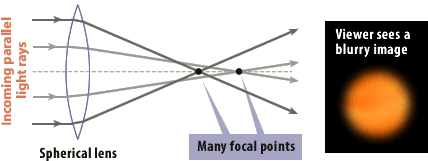
A similar effect is the so-called chromatic aberration. These effect is caused by rays of different colors not bending the same way when they hit the lens. This causes each wavelength of light to have its own focal point which also blurs the picture.
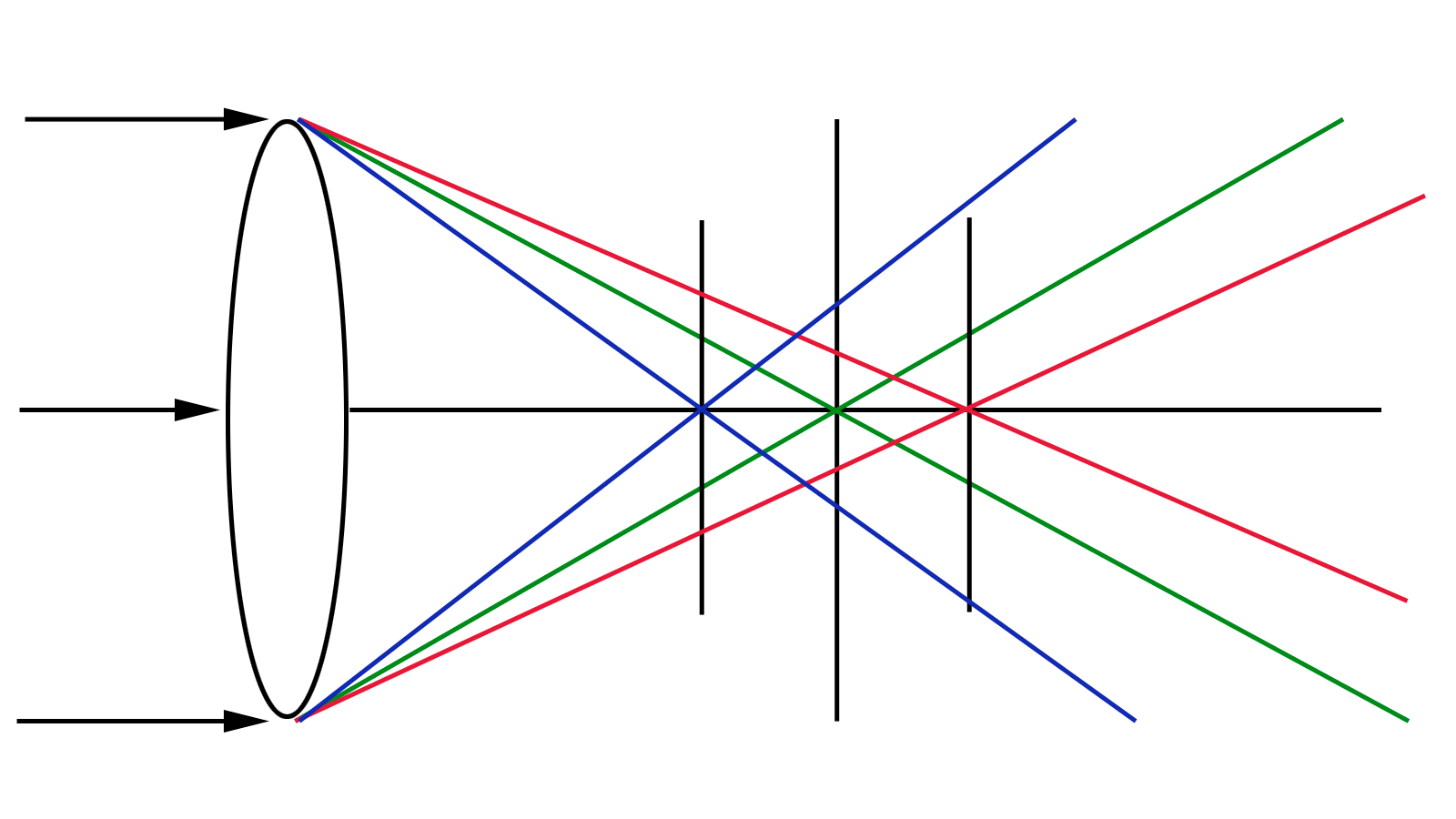
This distortion is not as bad as it has become common practice to coat lenses with special coatings that eliminate this problem.
There are many other lens errors like coma, vignetting and distortion but I will not be talking about them today. Maybe another day if I happen to see them in my pictures.

UPVOTE AND FOLLOW

I hope you liked this post in my series A Beginners Journey in Photography. You can check more of my content like the Science series on Light or my Hiking Series. I have also recently started a sci-fi space opera novel called Sol. Be sure to check it out too.
Until next time.
What would the picture look like with a concave lens?
A concave lens would disperse the rays. There would be no physical picture generated that you could capture with a sensor.
A silly question in retrospect :)
Dont worry. I dont judge.
There is specific type of weird and simple camera lenses with the principle of work like the telescope (concave mirror) like this one. Concave lenses are present in the most compound lens like this example since the late XIX century, but I don't know the example of a sole concave (conv + conc = telephoto)
It can be used with other types of lenses like your link but I dont think it is possible for solo use because it does not form a picture.
Are you sure there is not a concave mirror inside... Telescopes use reflex mirrors not lenses.
For the "telescope-like" camera lens, we got lost in translation (lens as objectif and lens as the optical lens), yes, the mirror is at the back.
One and only concave wouldn't make sense, you're right.
But, if you take a good lawyer... Fresnel lens could be some sort of concave :)
Hahahahha you are correct. :)
I want to share a video with a congratulation on a new year from astronauts. I'm a fan of Canon but looking at the walls of the ISS, I understand that astronauts are very happy people)))
Very nice video.if I were an astronaut I would be happy too.
The history of cooperation between Nikon and Nasa began 47 years ago, in 1971. This is a big argument in favor of Nikon)))
Maybe, it shouldn't be that hard :(
What shouldnt be as hard?
Well done! This post has received a 5.00 % upvote from @litasio thanks to: @steemstem-bot. Whoop!
If you would like to delegate to the @LitasIO you can do so by clicking on the following link: 10SP